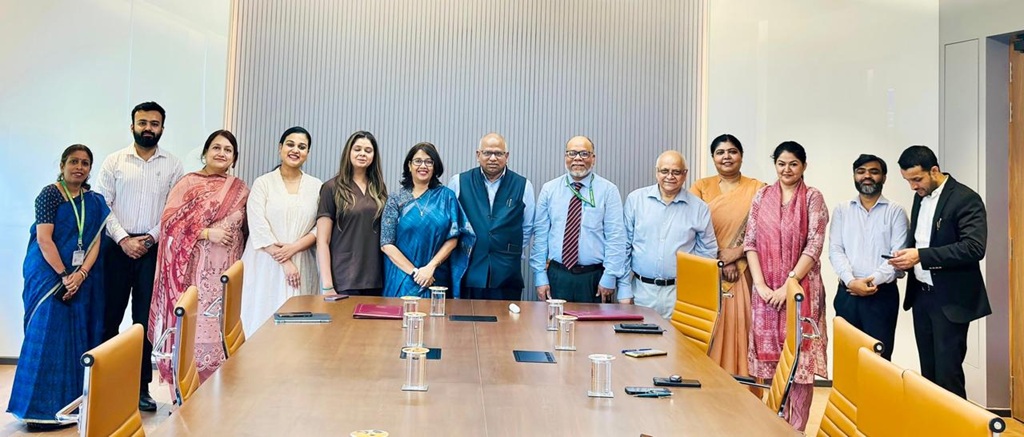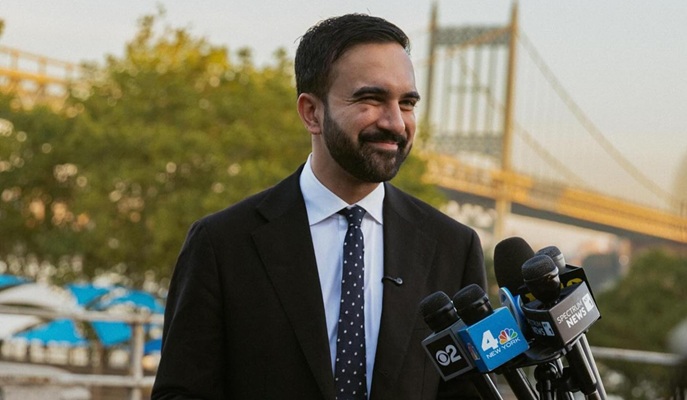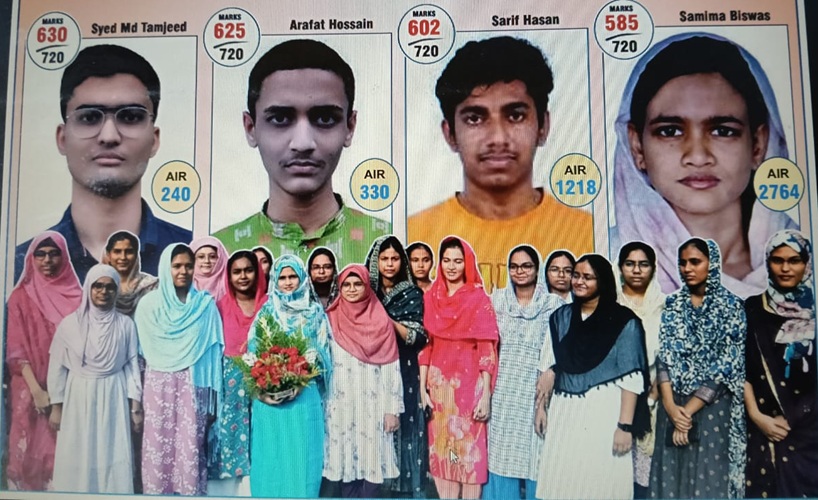If RSS and other Hindutva organisations are so concerned about health and about religious morality, they should pressurise the government to observe an anti-drinking day. Let drinkers break their bottles on that day, and let the alcohol flood the canals of Delhi and Mumbai. Muslims will just love it, as it will remind them of the day when the companions of Prophet Muhammad (PBUH) broke all the wine bottles iun Medina following the revelation of the verse of Quran banning alcohol.
With the celebrations for Yoga Day beginning soon, what needs to admitted is that Prime Minister Modi has been successful in combining His agenda of Hindu nationalism and corporatisation. Yoga Day will mark a milestone in the global corporatisation of Yoga. If the Government has made every attempt not to let the Day become victim of Hindu-Muslim divide with concessions on Surya Namaskar and chanting of Aum, it is less about respecting the sensitivities of Muslims and more about the demands of the large scale corporatisation of Yoga. Corporatisation always wants to expand its reach, and therefore avoids any kind of conflicts related to its products. If Modi has in recent times tried to woo Muslims through Ramadhan greetings and meetings with some Muslim representatives, it is also aimed at bringing unity on the cause of Yoga. Reasons may be right or wrong, but the Government has certainly looked to avoid divisions in society on the eve of the World Yoga Day. If he was seen inking it with Hindu religion, there was always a danger of many countries walking out of the celebrations and subsequent support to Yoga Market in their lands.
But if Yoga is about health, and the government is so much concerned about health, why not ban practices that destroy lives and bring diseases of all kinds to human bodies? The reason lies in the corporatisation of health system, which keeps economic interests ahead of health. In my book, “Quranic Paradigms of Sciences & Society” (First Volume: Dynamic Paradigm of Health), I have compiled huge statistics to show how first the problems are commercialised, and then their solutions are commercialised.
Take the example of Alcohol. In my above mentioned book, I have shortlisted its effects on human lives:
“World wide, alcohol accounts for more than 2.5 million deaths15.
- According to Global Burden estimates, the extent of worldwide psychoactive substance use is estimated at 2 billion alcohol users, 1.3 billion smokers and 185 million drug users.
- In an initial estimate of factors responsible for the global burden of disease, tobacco, alcohol and illicit drugs contributed together 12.4% of all deaths worldwide in the year 2000. Looking at the percentage of total years of life lost due to these substances, it has been estimated that they account for 8.9%16.
- In developing nations, alcohol ranks as the fourth cause of disability among men.
- Deaths attributable to alcohol form 1.3 percent for developed regions and 1.6 percent for developing regions.
- ‘The Global Burden of Disease’ study estimated that, in 1990, alcohol was responsible for 3.5 percent of the world’s total disability-adjusted life-years lost. This exceeds the tolls taken by tobacco (2.6 percent) and illicit drugs (0.6 percent) combined17. Among men, alcohol is the leading cause of disability in industrialised countries and ranks fourth in causing disabilities in developing countries (WHO, 1999).
- In industrialised nations, 14.3 % and in developing nations, 4.4% of total disability adjusted life years are lost.
- There are countries with alcoholics in the range of 10-36 % of total population. (Remember that alcoholic means an alcohol-dependent person, not the persons who take alcohol irregularly.)
- Cirrhosis is one of the ten leading causes of death in Mexico. Among men between the ages of 35 and 45, it is the number one killer18. In Mexico, Venezuela R.B., Argentina, and Trinidad and Tobago, cirrhosis deaths among men are as much as three times higher than the deaths among women.
- In 2002, the National Highway Traffic Safety Administration (NHTSA) estimated that 35 percent of all traffic deaths occurred in crashes in which at least one driver or non-occupant had a BAC of 0.08 percent or more and that any alcohol was present in 41 percent of all fatal crashes in 2002.
- Percent of traffic fatalities attributed to alcohol19
Chile 1970 46% (male traffic deaths)
Colombia 990s 60%
Costa Rica 1990s 46%
Peru 1990s 50%
- Alcohol was estimated to cause 41 percent of suicide cases among men in Australia, compared to only 16 percent among their female counterparts.
- Selected Health Issues by Alcohol Attributable Fractions20
Health issue Australian Canadian
Male Female Male Female
Liver cancer 0.18 0.12 0.29 0.16
Breast cancer – 0.03 – 0.04
Unspecific
liver cirrhosis 0.54 0.43 0.54 0.54
Chronic
Pancreatitis 0.84 0.84 0.84 0.84
Spontaneous
abortion – 0.04 – 0.20
Road injuries 0.37 0.18 0.43 0.43
Fall injuries 0.34 0.34 0.24 0.15
Fire injuries 0.44 0.44 0.38 0.38
Drowning 0.34 0.34 0 30 0.23
Suicide 0.41 0.16 0.27 0.17
Assault 0.47 0.47 0.27 0.27
- Drinking, along with poor condom use and sex with prostitutes, was found to increase by a factor of 15.6 the soldiers’ risk of acquiring sexually transmitted diseases21 More than a quarter (26 percent) of the women seeking counselling services in the urban areas of Mexico reported that their partners’ abusive behaviours were fuelled by intoxication (Ramirez and others, 1992). In the Solomon Islands, 32 percent of family violence offences were related to problem drinking (McDonald, 1995). Even higher rates were found in South Africa: 67.4 percent of domestic violence cases in Cape Town and 76.4 percent in rural areas involved alcohol use (Parry, 1995).
- In both Canada and Australia, 16 percent of child abuse cases could be attributed to alcohol. In Japan, 20 percent of abused children had alcoholic parents, and in Hungary 8.6 percent of child abuse cases in 1994 involved alcohol (Fekete, 1996). Alcohol has also been associated with a high proportion of child abuse cases in the UK (30 percent) and Norway (50 percent) (Moser, 1992).
- Alcohol use disorders present serious problems for the interpersonal relationships, health, and productivity of employed men and women. Of the $117 billion estimated as the economic cost of alcoholism and alcohol abuse in the United States in 1983, nearly $71 billion (61 percent) was attributed to lost employment and reduced productivity22.
- A new study finds that excessive alcohol consumption cost the United States $223.5 billion in 2006, or about $1.90 per drink. 23
- World-wide Deaths Attributable to Alcohol
Cause Total Pc Total
Of death deaths alcohol related alcohol deaths
Motor Vehicle 214,208 50 107,104
Accidents
Oesophagus Cancer 805,980 75 604,485
Liver Cancer 488,060 15 73,209
Alcohol Dependence 279,930 100 79,930
Syndrome Cirrhosis 2,094,110 50 1,047,055
Total 2,111,783
Some of the findings of a research report entitled, “ALCOHOL-ATTRIBUTABLE MORTALITY IN A HIGH PER CAPITA CONSUMPTION COUNTRY — GERMANY” by Ulrich John and Monika Hanke are startling. The report says:
- Based on data from Europe, increases or decreases of 1 litre of pure alcohol in the per capita consumption were estimated to be associated with increases or decreases of 1.3% in all-cause mortality rates (Her and Rehm, 1998)
- On this basis, for the USA, 4.5% of the total mortality was estimated to be alcohol-attributable (McGinnis and Foege, 1999)
- Restricted to middle adult age (36–64 years), in France, the rates are 19.1% of all male and 13.0% of all female death cases (Zureik and Ducimetière, 1996)
- Alcohol-related disease, accounting for 25% of the total mortality in males and 13% in females, is a substantial part of the total mortality in the most productive part of adult life.
In males, the median age at death in all alcohol-attributable cases is 7 years and in AAM1 cases 15 years below that of the male general population. In females, the median age at death in all alcohol-attributable cases is 10 years and in AAM1 24 years below that of the female general population.”
In India alone, apart from alcohol related deaths due to diseases, more than half of the deaths in road accidents are attributed to drunken driving.”
Why then not ban alcohol altogether. But this will not happen because alcohol market is one of the biggest of all markets in the world. Instead of banning alcohol, rehabilitation centres and hospitals treating alcohol related diseases are what swuits the market driven world.
If Yoga is being so sincerely pursued by Indian government, the answer lies not in their concern for health but their concern for the corporate gurus which are seeing huge market potential in Yoga.
An article on the increasing fondness of Americans for Yoga says,“A 2002 survey of Americans showed that more than half the population expressed an interest in practicing yoga, and a 2004 news report claimed that there were nearly 15.5 million yoga practitioners in the country. Nearly 77% of the practitioners of yoga are women, and half of the yoga enthusiasts have a college degree.
In the small college where I teach in rural Virginia, at which participation in at least one form of physical education is required, yoga classes are the first to fill up – not aerobic dance, not fitness walking, and certainly not weightlifting. Yoga Journal, the most popular magazine for yoga enthusiasts, now has a paid circulation of 350,000 and a readership of more than 1,000,000. Yoga has indeed been embraced by Americans.
But as yoga became more popular, and as the industry grew to be worth nearly $6bn, and as a variety of savvy marketers begin branding their “special” yoga techniques, it was hard not to notice that few yoga teachers and journals mentioned the origins of the practice and its connection to Hinduism. Yoga was “secularised” to rid it of any taint of a “pagan” tradition. The practice, the savvy marketers claimed, was “a spiritual path, but not a religious one”, to calm the committed Christian who wanted to hang on to Jesus while doing the “surya namaskara” (obeisance to the sun).” http://www.theguardian.com/commentisfree/belief/2010/dec/02/yoga-hindu-rebranded-wrongly
An article, entitled, “How Yoga became a $27 Billion Industry — and Reinvented American Spirituality” says: “In the more than 40 years since Khalsa (the firs Yoga Master in the USA to market it) opened his school, he has watched as yoga in America has evolved from a niche activity of devout New Agers to part of the cultural mainstream. Dozens of yoga variations can be found within a 1-mile radius of his studio in Manhattan’s Flatiron District, from Equinox power yoga to yogalates to “zen bootcamp.” Across America, students, stressed-out young professionals, CEOs and retirees are among those who have embraced yoga, fueling a $27 billion industry with more than 20 million practitioners — 83 percent of them women. As Khalsa says, “The love of yoga is out there and the time is right for yoga.”
“Perhaps inevitably, yoga’s journey from ancient spiritual practice to big business and premium lifestyle — complete with designer yoga wear, mats, towels, luxury retreats and $100-a-day juice cleanses — has some devotees worrying that something has been lost along the way. The growing perception of yoga as a leisure activity catering to a high-end clientele doesn’t help. “The number of practitioners and the amount they spend has increased dramatically in the last four years,” Bill Harper, vice president of Active Interest Media’s Healthy Living Group, told Yoga Journal.
More than 30 percent of Yoga Journal’s readership has a household income of over $100,000. As American yoga Master Rodney Yee remarked at a 2011 Omega Institute conference, compromising the authenticity of the practice and ignoring its traditions is “ass-backwards.” “It dumbs down the whole art form,” he said.”
http://www.huffingtonpost.com/2013/12/16/how-the-yoga-industry-los_n_4441767.html?ir=India&adsSiteOverride=in
With World Day for Yoga, the big industrialists must be having big plans to market Yoga and all its products, from clothes to juices in all countries, especially Western countries. Prime Minister Modi is an ideal partner. What else can be of greater importance to him than something, which combines his love for corporates and Hinduism? It will be pertinent to argue here that if Suryanamaskar was removed from the programme, it was not in respect to Muslim apprehensions, as has been publicised by the government, but to make sure that the marketing of Yoga in Christian-dominant West and other countries where some other religions are dominant, does not face any problems.
If RSS and other Hindutva organisations are so concerned about health and about religious morality, they should pressurise the government to observe an anti-drinking day. Let drinkers break their bottles on that day, and let the alcohol flood the canals of Delhi and Mumbai. Muslims will just love it, as it will remind them of the day when the companions of Prophet Muhammad (PBUH) broke all the wine bottles iun Medina following the revelation of the verse of Quran banning alcohol.
- Dr Javed Jamil is India based thinker and writer with over a dozen books including his latest, “Quranic Paradigms of Sciences & Society” (First Vol: Health), “Muslims Most Civilised, Yet Not Enough” and “Muslim Vision of Secular India: Destination & Road-map”. Other works include “The Devil of Economic Fundamentalism”, “The Essence of the Divine Verses”, “The Killer Sex”, “Islam means Peace” and “Rediscovering the Universe”. Read more about him at http://www.worldmuslimpedia.com/dr-javed-jamil. Fcaebook page: https://www.facebook.com/javedjamil2015. He can be contacted at doctorforu123@yahoo.com or 91-8130340339.







0 Comments